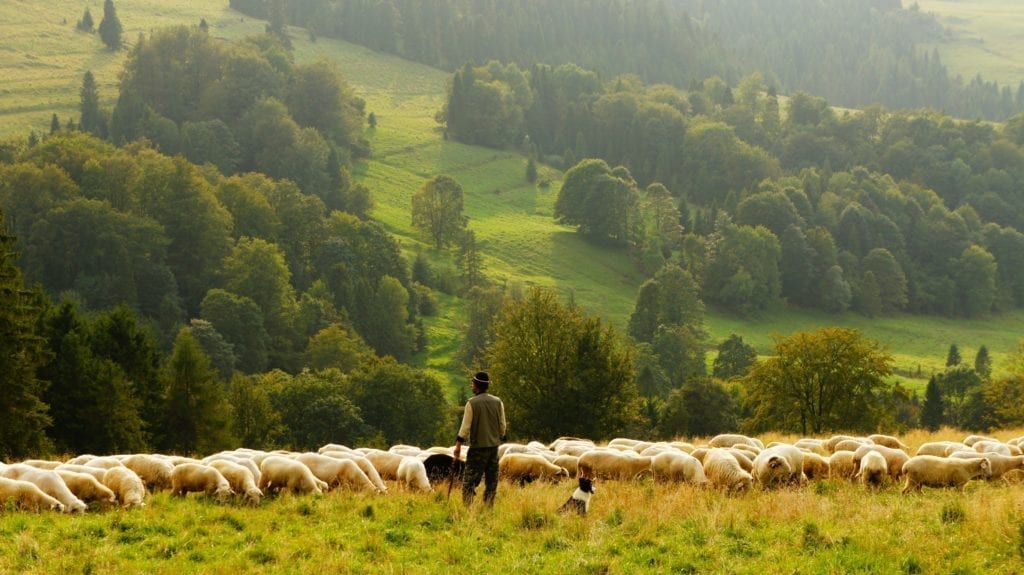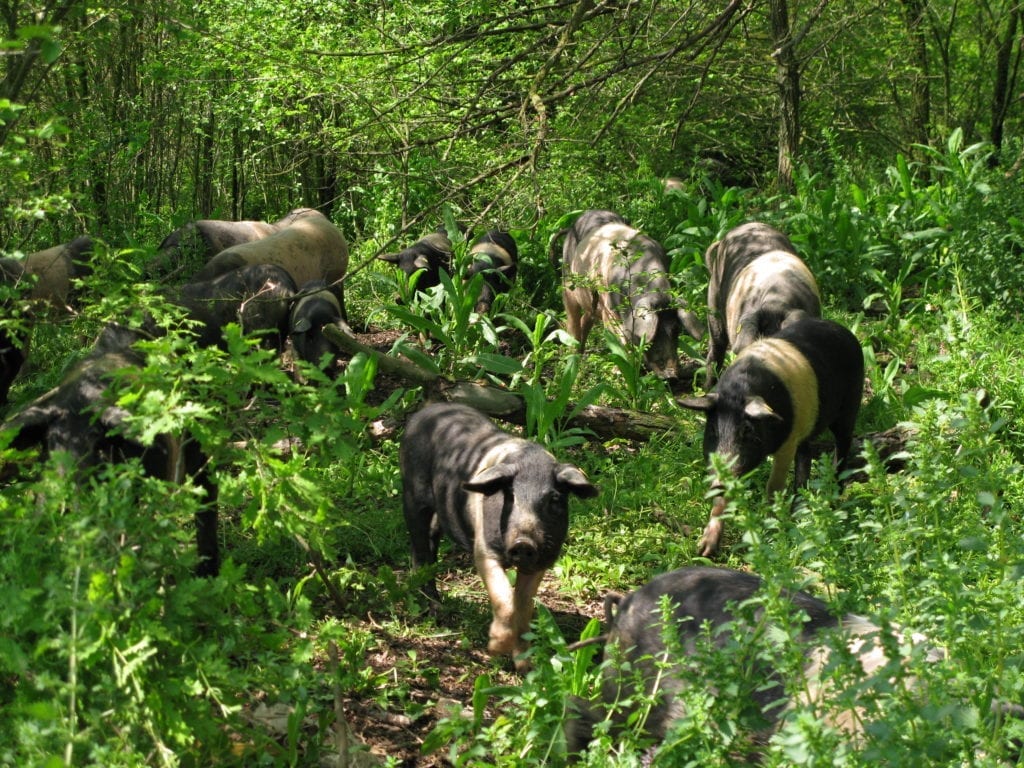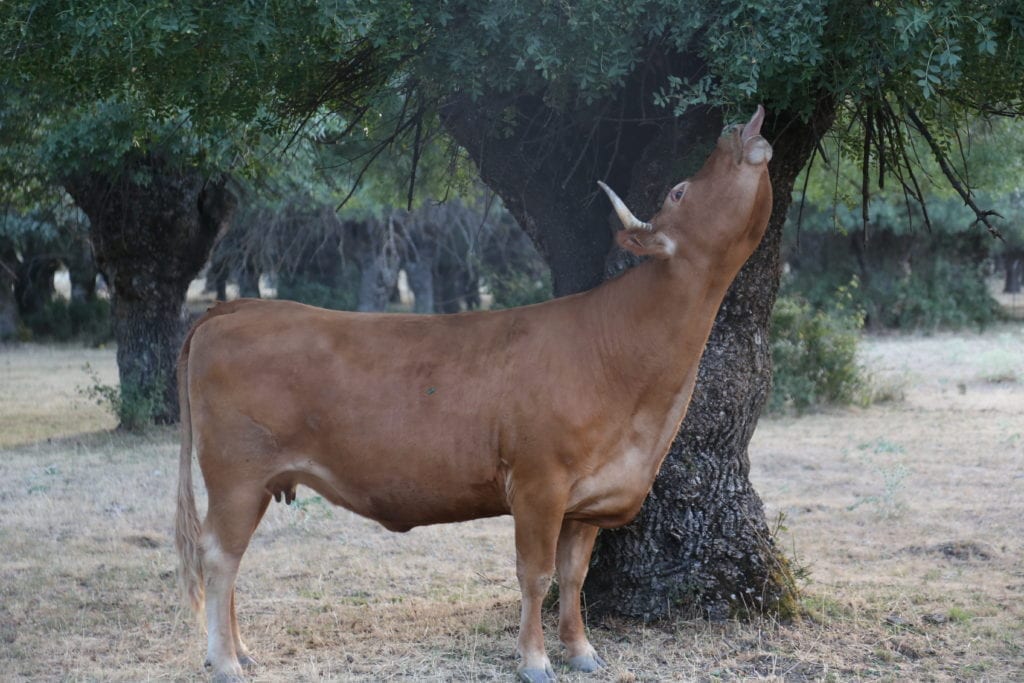Agromix: Transforming Landscapes
International climate change action is increasing, but policy-makers have yet to address a core challenge: land use. Agriculture is a leading cause of greenhouse gas emissions, and with increasing food insecurity and a rapidly growing global population, our response to these challenges must begin in the field. This is the inspiration behind the AGROMIX project – Agroforestry (AGRO-) and mixed farming (-MIX) – which has the ambition of ‘transforming landscapes’ by delivering new research on how these land use systems work, designing models for farmers to implement these practices, and offering policy recommendations for decision makers to support these practices. How will this four-year pan-European project achieve its ambitious goals, whilst using socially-innovative and high-tech participatory approaches?
Our common challenges:
According to the Intergovernmental Panel on Climate Change (IPCC, 2020), agriculture is responsible for roughly 23% of global greenhouse gas emissions, accounts for 70% of human water use, and occupies 40% of European land surface alone. It is increasingly clear that to limit global temperature rise to 1.5°C above pre-industrial levels – the objective of the 2015 Paris Agreement – a transformation of current land management practices is needed.
Starting in 1950, the so-called ‘Green Revolution’ introduced modern machinery, chemical fertilizers, and monoculture systems into agricultural production. This brought significant benefits in the short term, reducing global hunger rates from an estimated 50% in 1945 to 11% in 2018. However, this industrialization is taking its toll on the natural environment: chemical fertilizers are reducing soil fertility, land clearing is damaging biodiversity, and monoculture systems are leaving many farmers dependent on the success of a single crop.

Furthermore, after decades of unprecedented progress in reducing hunger, since 2015 food insecurity has begun to rise once again, leading to the Food and Agriculture Organization of the United Nations (FAO)’s staggering prediction that to fulfil the demands of a growing population, by 2050 food production must increase by 60% from 2007 levels. Complicating challenges further, in 2020 the IPCC concluded that climate change itself is reducing agricultural yield. In short: our current food system is driving climate change, which in turn damages food production.
We are presented with the seemingly impossible: significantly reduce greenhouse gas emissions and the impacts of climate change, while simultaneously increasing the quantity of food produced. It is no wonder that in its 2019 review of the effects of climate change on agriculture, the FAO states that “[facing this challenge requires] a significant transformation of agriculture and food systems, with concerted action and coordinated involvement of all stakeholders on a long-term perspective.”
How is the world responding?
Despite growing evidence of the agriculture-climate change nexus, for years agriculture has been sidelined in the international climate change negotiations, and even the landmark 2015 Paris Agreement gives minimal attention to land use. However, in the past two years EU leaders have begun to recognize the potential of regenerative land use practices to support their ambitious climate change targets, making way for farmers and researchers to explore the potential of these systems to address the challenges we face.

Specifically, the EU Green Deal – with the ambitious target of making Europe the first climate-neutral continent by 2050 – advocates for regenerative farming in its Farm to Fork Strategy. The Strategy assures that new ‘eco-schemes’ will offer a major stream of funding to boost sustainable practices, such as precision agriculture, agroecology (including organic farming), carbon farming and agroforestry. Likewise, the 2020 reform of the EU’s flagship Common Agriculture Policy (CAP) – see REVOLVE’s 2020 feature on regenerative agriculture in the CAP by AGROMIX Communications Manager Josep Crous Duran – encourages the implementation of “sustainable practices, such as precision agriculture, organic farming, agroecology, agroforestry and stricter animal welfare standards.” Does this hail a new era, where intergovernmental institutions invest in a meaningful transition towards the land use systems we need? Perhaps, but for policy-makers to address farmers’ needs, there is a gap in knowledge on how regenerative land use systems work, how they vary per region, what is needed to make these systems economically viable, and how policy frameworks can support farmers to integrate these methods.
Agriculture is a leading cause of greenhouse gas emissions, and with increasing food insecurity and a rapidly growing global population, our response to these challenges must begin in the field.
Regenerative practices
The question is: does a land use system exist that addresses both the environmental and food security challenges we face? There is no one answer, but one solution is to explore the ancient practices of agroforestry and mixed farming, evaluating their potential to lead this land use transition. What distinguishes these methods? Agroforestry and mixed farming integrate trees with crops and/or livestock on the same land area, creating biodiverse landscapes where one field yields more than one crop and/or product. If managed well, this approach can increase productivity in comparison to conventional agriculture, sequester carbon emissions, regenerate soil, increase biodiversity, reduce flooding, and diversify farmers’ income sources. As these systems gain recognition – such as through the EU Green Deal and CAP revision – a growing community of researchers and farmers are exploring their benefits. To support this movement, AGROMIX is bringing together a variety of stakeholders to integrate agroforestry and mixed farming into our modern food system.
A landscape approach
The transition towards resilient land use cannot be led by researchers and policy-makers alone; farmers and land managers must be at the epicenter. AGROMIX uses a holistic (or landscape) approach, considering the territory as a whole, rather than taking a narrow (or field) approach. This means collaborating with a variety of actors and ‘landscapes’ involved in the land use transition, from environmental, socio-economic, and political perspectives.
AGROMIX is not a classic research project: here farmers are fully involved. We want to develop policies with the people who’ll be affected by them, and create tools with those who’ll use them.
In terms of physical landscapes, AGROMIX partners work with 12 agroforestry and mixed farming sites across Europe, supporting land managers to reap the environmental benefits of these systems, and ultimately increasing the landscapes’ resilience to climate change. In relation to socio-economic landscapes, farmers that transition to these systems will diversify their livelihoods, alleviating dependence on a single crop for their income. Furthermore, transitioning from specialized agriculture to diversified production systems will generate employment and enable farmers to incorporate resource-efficient practices based on circular economy principles.

As for the political landscape, AGROMIX uses its field experience and research to impact policies at the regional, national and international levels. The project gathers and disseminates evidence of how these production systems contribute to reaching climate change targets, thus proving the need for political action. To turn evidence and interest into action, partners will develop and disseminate policy recommendations, offering a roadmap to integrate agroecological principles into current land use legislation.
Participatory approaches
In an interview with AGROMIX Coordinator – Dr. Sara Burbi from Coventry University (UK) – REVOLVE learned about the project’s unique approach: “AGROMIX is not a classic research project: here farmers are fully involved. We want to develop policies with the people who’ll be affected by them, and create tools with those who’ll use them.” Burbi explained the project’s ‘participatory co-design’ approach, saying: “All knowledge is valid, and as researchers we need to be humble and value non-academic knowledge. By working with farmers, we access their experience, history, culture, and beliefs. It’ll work both ways, we’ll support them in redesigning their production systems, and they’ll share with us their needs and aspirations, allowing us to design relevant and practical tools for farmers across the continent.” In addition to this personal approach, AGROMIX uses innovative techniques and advanced technology to achieve its goals, and will use serious games (activities designed for a purpose other than pure entertainment) and a dedicated mobile application to engage stakeholders and facilitate this land use transition. However, involving and encouraging farmers to join in is not a simple process, and as Burbi explains: “the results will not be immediate. A shift in people’s mindset is needed, and there will be a necessary transition period. Therefore, one of the objectives of AGROMIX is to support and engage all stakeholders throughout this process.”
Leaving a legacy
Mainstreaming agroforestry and mixed farming is nothing short of a land use transformation, challenging the ways farmers, policy-makers, and even consumers perceive the landscapes around them. Based on its on-the-ground experience, AGROMIX will produce a variety of outputs, including: new research on how agroforestry and mixed farming can be optimized in each of Europe’s agro-climatic zones; 12 online Knowledge Exchange Hubs for farmers to access knowledge, tools and guidance tailored to their region, including software, factsheets, and an interactive mobile app; tools to estimate the production and financial viability of these systems; and policy recommendations. Dr. Burbi concludes: “We want to find a new way to treat this Earth. We will share our experience of how these systems can transform landscapes of all kinds, with the ultimate goal of restoring a natural equilibrium between man and land. As long as we eat, we are deeply connected to the land, even if we don’t realize it!”